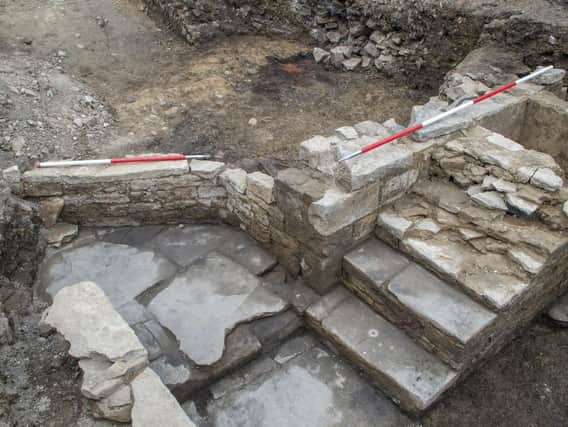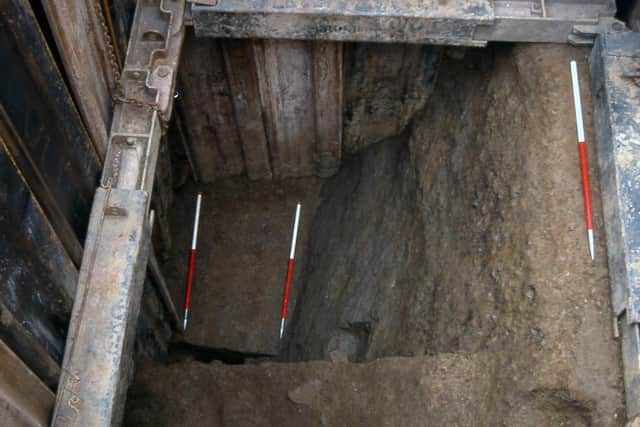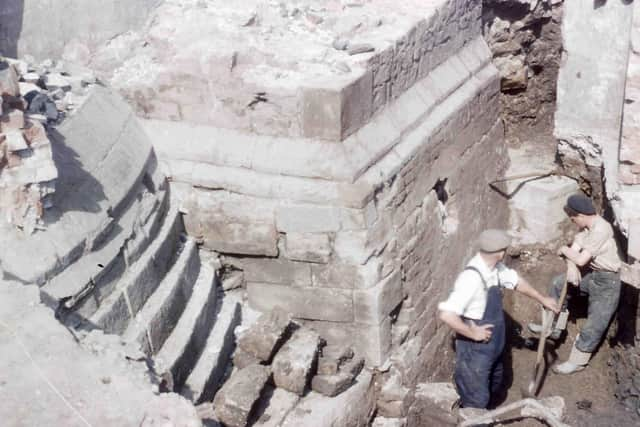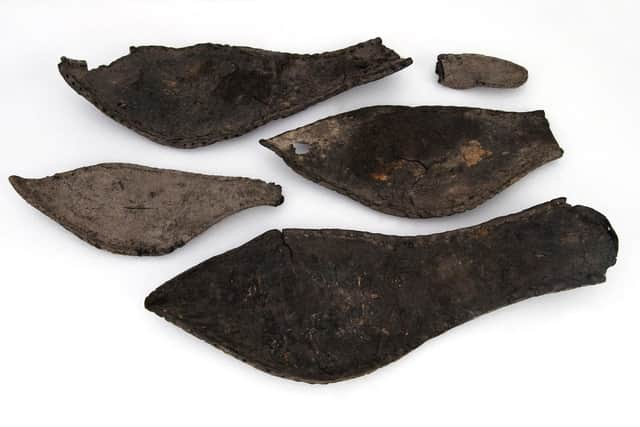Sheffield's medieval castle deserves place in history alongside 'Warwick and the Tower of London'


University of Sheffield archaeologists have been studying the city-centre site since 2014, and have now pulled together all the largely unpublished archaeological work on the castle, dating back to the 1920s and including the latest dig, which started in 2018.
They say the structure, which was covered by the former Castle Market that was demolished five years ago, deserves a place in English history alongside well-known landmarks like those in Warwick, Dover and the Tower of London - and that there is strong evidence that more substantial parts of the castle walls may still be in place.
Advertisement
Hide AdAdvertisement
Hide AdThe University said a new assessment of all the excavations on the site “reveals how Sheffield Castle was among the most important political and cultural centres in medieval England, home to aristocrats who played major roles in local, national and international affairs”.


The team concluded that the castle “played a major role in local, national and international affairs in the medieval era, and shaped the development and topography of modern-day Sheffield”.
Professor John Moreland from the university’s Department of Archaeology said: “Sheffield is seen by most people as the Steel City, but what our research makes clear is that the city has a deep history that dates right back to the Middle Ages.
“Unfortunately, since the castle was largely destroyed following the English Civil War and multiple developments have been built on its site ever since, this rich medieval history of the city has largely been forgotten or ignored.”
Advertisement
Hide AdAdvertisement
Hide AdThe University of Sheffield’s Castle Project began in 2014 and has now pulled together all the largely unpublished archaeological work on the site, dating back to the 1920s and including the latest dig, which started in 2018.


The team believes there is evidence of a classic motte-and-bailey castle from the Norman period but they found no evidence of a rumoured Anglo-Saxon use of the site.
The medieval castle was started in 1270 and archaeologists think that the gatehouse - parts of which were excavated last century - consisted of two D-shaped towers, similar to Rhuddlan Castle in north Wales.
The castle’s curtain wall survives close to the gatehouse, with a further small section to the west.
Advertisement
Hide AdAdvertisement
Hide AdThe team says it is probable that large stretches still survive on the northern edge of the site, overlooking the River Don, and it is possible that some of the eastern wall also survives.


Sheffield Castle was a Royalist stronghold during the Civil War and Parliament ordered for it to be completely destroyed in 1646.
The site was covered by the market complexes in the 1920s and 1950s but these were demolished five years ago.
Much of the surrounding area is undergoing redevelopment and there are proposals for an urban park on part of the castle site, including a plan to reopen the River Sheaf - the river which gives Sheffield its name but which currently runs in a dark culvert under the city centre.
Advertisement
Hide AdAdvertisement
Hide AdSheffield Castle: Archaeology, Archives, Regeneration 1927-2018 is written by Professor Moreland, Professor Dawn Hadley, from the University of York’s Department of Archaeology, along with Ashley Tuck and Mili Rajic from Wessex Archaeology, which conducted the latest dig.
It will be launched at the University of Sheffield’s Festival Of The Mind on September 26 and will also be available as a free download at doi.org/10.5284/1074899.
Comment Guidelines
National World encourages reader discussion on our stories. User feedback, insights and back-and-forth exchanges add a rich layer of context to reporting. Please review our Community Guidelines before commenting.